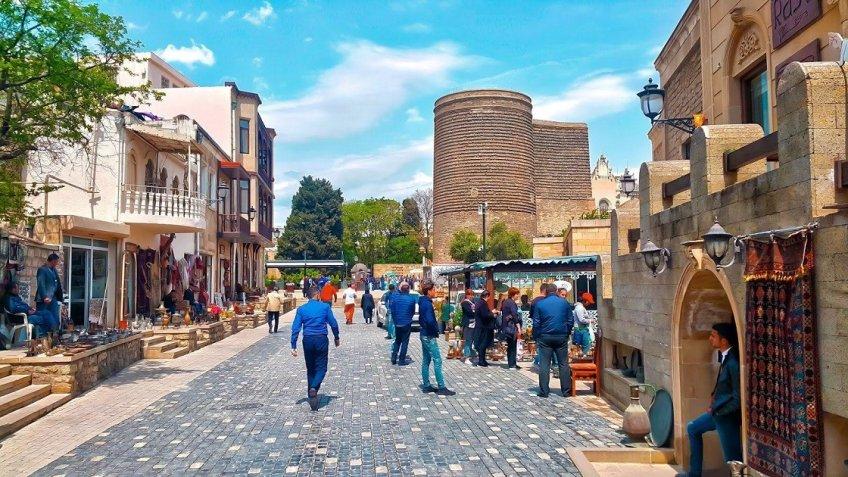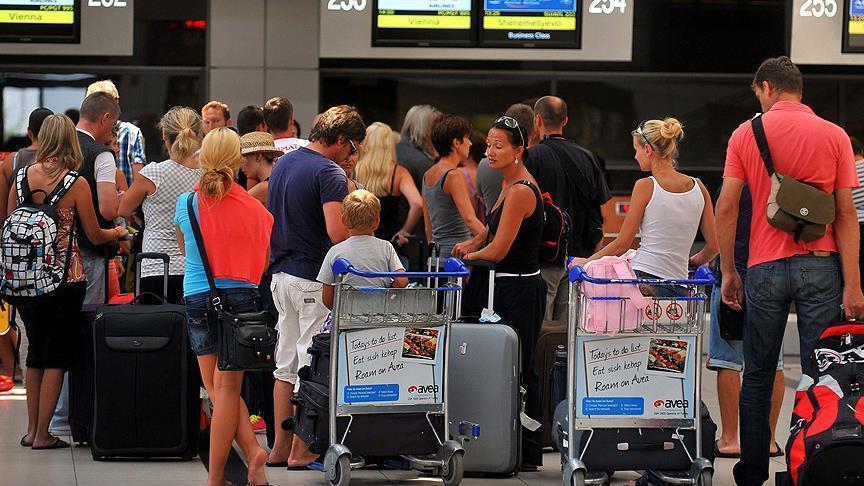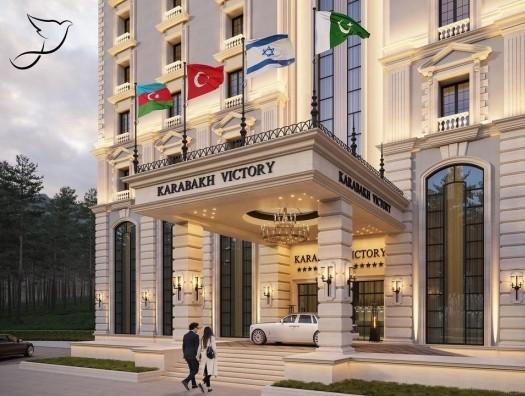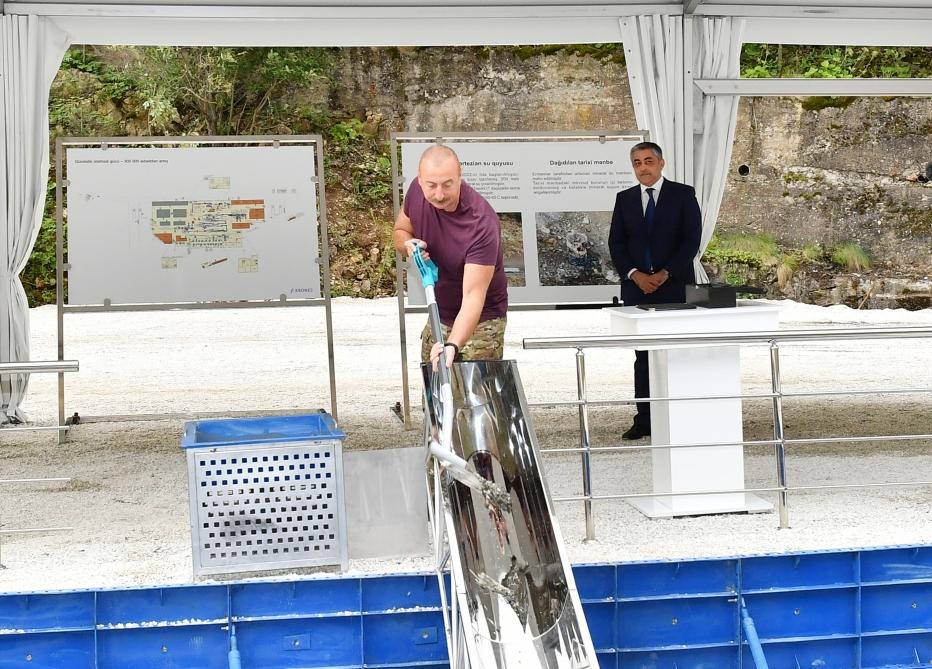Incoming tourism in Azerbaijan amid quarantine restrictions and closed borders Anaysis by Caliber.Az
The last month of the summer season is coming to an end and international relevant agencies recapping the preliminary results of the recreational sphere which faced a series of crises in recent years. According to a recent report by the UN World Tourism Organization (UNWTO), the travel industry is developing dynamically, and the number of international arrivals and foreign flights has increased many times.
A high incoming dynamics is also recorded in Azerbaijan, where despite the still closed land borders, a 2.3-fold increase in the number of foreign tourists was nevertheless registered. The country strongly supports this trend: only in recent days, have the prospects of expanding the tourist flow discussed with Serbia, Egypt, Indonesia, Pakistan, and Uzbekistan.

Despite the fuel crisis, the war in Ukraine, anti-Russian sanctions, ongoing outbreaks of coronavirus and still remaining quarantine restrictions in China, a number of regions of the world have seen steady growth in the recreational sector. Since the beginning of the year, the North American region, Türkiye, and North African countries have been among the leaders in the post-pandemic revival of the tourism industry. Moreover, after a long period of stagnation, the performance of the tourism industry in Europe has increased sharply, where, according to UNWTO, over the past five months the number of foreign flights has quadrupled, increasing year-on-year by 350%. "This came as a result of the lifting of quarantine restrictions and the opening of borders. In Europe, the demand for travel was particularly high in April, during the Easter vacations, and showed an increase of 458%, and in the US the number of foreign tourists increased by 112%," General Secretary of UNWTO Zurab Pololikashvili said referring to the information published a day before by Buying Business Travel.
In general, according to the profile agency of the UN, the volume of international travel has increased by 40-70% compared to the pre-pandemic year of 2019. Experts also note that in Europe the number of international arrivals is likely to increase by the end of the year to 65-80% of the level of 2019 and it is the EU and the US that will be able to count on a significant increase in income from tourism in 2022.
The post-Soviet states, in particular Moldova, which was the first in the region to exceed the record figures for 2019, followed by Georgia, as well as Azerbaijan and the Central Asian republics, showed quite good results in the incoming tourism. Here we should immediately mention that the indicators of tourist statistics in the CIS countries were significantly affected by recent geopolitical events: the war in Ukraine led to a massive outflow of the population of the republic to neighboring countries, spinning the process of relocation of Russian companies and citizens. These circumstances contributed to an increase in the number of trips and air travel between the countries of the region. According to UNWTO rules, all foreigners who are not transit passengers and stay on the territory of another country for more than three days can be included in the statistics as tourists.

Of course, tourist statistics is a rather complicated and often very approximate discipline. However, in general, this year can clearly be considered the beginning of the post-pandemic revival of the tourism industry in most post-Soviet countries. In particular, the dynamic growth of tourism indicators was recorded in Azerbaijan: in January-July 2022 the country was visited by 832,000 foreigners from 171 countries, which is 2.3 times more than during the same period last year. This is not surprising, as by the beginning of summer Azerbaijan has restored air travel with 92 countries. Nevertheless, experts believe that the increase in tourist traffic could have been even greater if the republic lifted the remaining quarantine restrictions and opened its land borders. But even in this truncated version, Azerbaijan has demonstrated sufficient success in its strategy to attract foreign tourists.
At the same time, according to the recently released State Statistics Committee data, Russia again carries the palm of victory in inbound tourism - the citizens of this country accounted for 26.4% of all foreign visitors. It is followed by Türkiye - 21%, Iran - 11.6%, Saudi Arabia - 6.8% and Georgia - 4.8%. Positive growth was also noted in the number of visitors from Pakistan, India, UAE, Ukraine, Kazakhstan, Kuwait, Israel, Oman, as well as Great Britain, and Uzbekistan. The data showed that Arabs made up the largest chunk of foreign visitors in January-July with over 203,000 arrivals, nearly fourfold compared to a year ago. The next position on the growth rate of tourist flow to our country is occupied by the European Union countries - 2.5 times and the CIS countries - 1.8 times.
The above statistics on the geography and volume of tourist flow determine the further targeting of specialized agencies of Azerbaijan, which have identified the most priority areas for further development. Thus, in terms of regional focus, the greatest attention is paid to the countries of the Islamic world, the post-Soviet space, the Indochina region, as well as the EU states. The priority of such a choice is also evidenced by the meetings held this week by the State Tourism Agency of Azerbaijan (ASTA), as well as proposals voiced by embassies and other foreign agencies. So, the other day in Baku, meetings were held with the business circles of Uzbekistan, where, among other things, the prospects for expanding the tourist flow were discussed. During the same days, ASTA held talks with the embassies of Serbia and Egypt on expanding tourism and preparing a joint action plan in the field of recreation, sharing experiences and cooperation of travel agencies, in particular the opening of direct flights from Baku - Cairo - Baku. Indonesian Ambassador to Azerbaijan Hildi Hamid has recently voiced proposals for the expansion of tourism connections and called for the opening of direct flights between the two countries and expanding cooperation between travel agencies.

The Embassy of Pakistan is also very active in this regard, which recently noted the importance of further promotion of the joint tourism cluster, stressing that thanks to the four flights from Karachi, Lahore, and Islamabad to Baku every week, more than a thousand Pakistani tourists visit Azerbaijan.
Thus, the organization of direct flights and expansion of cooperation between Azerbaijani travel agencies with contractors in Islamic countries, the post-Soviet region, and South-East Asia have been indicated as the key principle of the strategy of expansion of tourism in the near future.
At the same time, new programs and working plans for tourism development are developed in Azerbaijan, including those based on the priorities of the Strategy of Socio-Economic Development for 2022-2026. In particular, during a recent conference "Azerbaijani tourism in the post-pandemic period" the Chairman of the ASTA Fuad Nagiyev noted that along with the improvement and diversification of transport links with target tourism markets, the strategy will give impetus to the recovery of the tourism sector in the country, contributing to the creation of new tourist and recreational areas, elimination of seasonality in domestic tourism and the sustainable development of the tourism sector.
As part of the strategy implementation, it is planned to increase the share of tourism in the non-oil GDP of Azerbaijan, and the share of revenues from tourism should rise by an additional 20%. This is to be achieved through the promotion of domestic and foreign tourism in the off-season, including the development of balneological resorts that provide services to foreign nationals as part of medical tourism. It is expected that by 2026 at least two medical institutions will receive accreditation from Joint Commission International, and Azerbaijan will be included in the rating table of the Medical Tourism Index (MTI), which will further increase the external demand for our country. In order to expand incoming tourism, it is also planned to take measures to simplify visa procedures: the number of tourists arriving from new countries with which there is a visa or visa-free regime at the border is expected to increase by 7.5% annually compared to 2019. It is also expected to increase the share of foreign tourists arriving in Azerbaijan by rail and road, simplification of visas, and other procedures in this segment as well.

At the same time, the construction of new tourist zones, hydropathic and other specialized resorts in the Karabakh region is planned: the first hotels have already been established in Shusha, the construction of the "Istisu" resort in Kalbajar district has begun, as well as the formation of tourism infrastructure in the villages of Tug, Sugovushan and Dashalty and the village of Hadrut is planned. The development of rural and ecological tourism is also seen as very promising, and this trend is already implemented in Guba, Gusar, Khachmaz, Sheki, Zagatala, Gakh, Lankaran, Astara, and Lerik districts - small and medium business entities are funded here and rural guest houses are being built.








